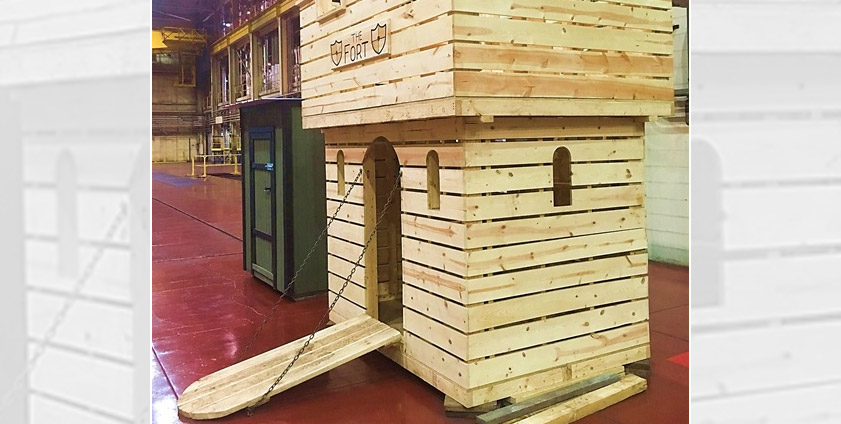Training Simulators Destined for Reuse – And A Good Cause

For much of the spring, sites across Fossil Generation have been training to the revised Confined Space Entry Program that, for most of the fleet, went into effect in March. Under the program (GEN-SAF-0003), a Confined Space is defined as a space that is: 1.Is large enough and so configured that an employee can bodily enter and perform assigned work; and 2.Has limited or restricted means for entry or exit; and 3.Is not designed for continuous employee occupancy. Confined space simulators, usually simple boxes with entryways that allow those training to mimic access to a space covered by the program, always have been an integral part of training. Training with a simulator allows workers the opportunity to practice the permitting and procedures required to facilitate safe entry. But while training is essential to safety, nothing says that it can’t be done with panache. At the Fort Martin Power Station, workers designed four different confined space simulators, all unique and designed to be repurposed after training is complete. “Our team came up with the ideas, and they built the simulators,” said Fort Martin Director Dan Coldren. Rather than simple wooden boxes, the Fort Martin simulators look like garden sheds, mobile hunting blinds … even a child’s dream backyard castle named “The Fort,” in a nod to the plant’s behavior-based safety program, Fossil Observation Recognition Team (FORT). Each simulator building has its own voting box in the plant front office, and tickets are being sold for individuals who want to enter a drawing to win the buildings once training is complete. Proceeds will go to charity. “I was impressed,” said Jim Laughner, director of Fleet Operations Support, when he saw the simulators on the turbine deck. “Fort Martin came up with a unique method to generate interest in the confined space training, while also providing for a good cause.” “There’s really no good place to store these buildings long-term, and our team members have a long history of caring for one another,” said Dan. “What better way to support this very important safety training as well as to provide for those in need.” The winners of the buildings will be selected on June 1.
May 18, 2018
For much of the spring, sites across Fossil Generation have been training to the revised Confined Space Entry Program that, for most of the fleet, went into effect in March.
Under the program, a Confined Space is defined as a space that is:
- Is large enough and so configured that an employee can bodily enter and perform assigned work; and
- Has limited or restricted means for entry or exit; and
- Is not designed for continuous employee occupancy.
Confined space simulators, usually simple boxes with entryways that allow those training to mimic access to a space covered by the program, always have been an integral part of training. Training with a simulator allows workers the opportunity to practice the permitting and procedures required to facilitate safe entry.
But while training is essential to safety, nothing says that it can’t be done with panache.
At the Fort Martin Power Station, workers designed four different confined space simulators, all unique and designed to be repurposed after training is complete.
“Our team came up with the ideas, and they built the simulators,” said Fort Martin Director Dan Coldren.
Rather than simple wooden boxes, the Fort Martin simulators look like garden sheds, mobile hunting blinds … even a child’s dream backyard castle named “The Fort,” in a nod to the plant’s behavior-based safety program, Fossil Observation Recognition Team (FORT).
Each simulator building has its own voting box in the plant front office, and tickets are being sold for individuals who want to enter a drawing to win the buildings once training is complete. Proceeds will go to charity.
“I was impressed,” said Jim Laughner, director of Fleet Operations Support, when he saw the simulators on the turbine deck. “Fort Martin came up with a unique method to generate interest in the confined space training, while also providing for a good cause.”
“There’s really no good place to store these buildings long-term, and our team members have a long history of caring for one another,” said Dan. “What better way to support this very important safety training as well as to provide for those in need.”
The winners of the buildings will be selected on June 1.